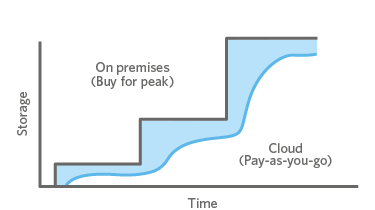With our object storage platform you can transfer your entire storage infrastructure to our cloud and easily archive your data without limitations of quantity or data type.
Object based storage examples.
Examples of object storage object storage has a variety of use cases which require that data stores scale up to petabytes and beyond all while remaining at high levels of availability and performance.
The most common examples of block storage are san iscsi and local disks.
Data that benefits the most from object storage includes.
In object storage the data is broken into discrete units called objects and is kept in a single repository instead of being kept as files in folders or as blocks on servers.
Object storage also known as object based storage is a strategy that manages and manipulates data storage as distinct units called objects.
Today s internet communications data is largely unstructured.
Each object typically includes the data itself a variable amount of metadata and a globally unique.
These objects are kept in a single storehouse and are not ingrained in files inside other folders.
This is data that does not conform to or cannot be organized easily into a traditional relational database with rows and columns.
Unstructured data such as music images and videos.
Block storage is the most commonly used storage type for most applications.
Object storage also called object based storage is an approach to addressing and manipulating data storage as discrete units called objects objects are kept inside a single repository and are not nested as files inside a folder inside other folders.
Object storage also known as object based storage is a computer data storage architecture that manages data as objects as opposed to other storage architectures like file systems which manages data as a file hierarchy and block storage which manages data as blocks within sectors and tracks.
Object storage often referred to as object based storage is a data storage architecture for handling large amounts of unstructured data.
This way you can take advantage of the cloud flexibility increasing and reducing your resources based on your needs and using a pay per use system.





























